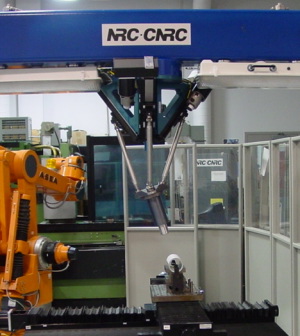
In Parallel
By Treena Hein
Automation Motion Control Research RoboticsNew grant for UOIT researcher helps ensure Canada stays a global leader in robotics

Steady progress in improving adaptive automation is an ongoing demand from industry. You name it, manufacturers need it: higher precision assembly, faster product handling, better surface finishing and milling capabilities, improved task flexibility and reliability.
To meet these demands, researchers are turning to parallel robots, which possess potentially much higher rigidity, accuracy and loading capacities than serial (articulated) robots. Once that potential becomes reality, parallel robots are expected to ‘take over’ plant floors all over the world.
On the cusp of this new era in automation are researchers like Dr. Dan Zhang, a professor at the University of Ontario Institute of Technology in Oshawa, Ontario. Zhang was recently appointed Canada Research Chair in Robotics and Automation, complete with a $500,000 grant to continue his parallel robot development.
“This announcement is a great recognition of my research,” he says. “It presents an incredible opportunity to further improve the reliability and accuracy of current systems. Parallel robotic systems have vast potential to provide Canada’s manufacturing sector with cost-effective productivity and industry stability.”
“I have a patent pending on a new parallel robotic machine tool for surface finishing – deburring, degating, surface polishing, drilling holes – in the automotive and aerospace industries,” he adds.
Zhang’s parallel robot research focuses on ‘design for control’ (off-line management or adjustment of a robotic system) and ‘total integration’ (an integrated view of manufacturing systems).
“The four main robotic performance measures – accuracy, load capacity, task flexibility, and reliability – are closely connected,” he notes. “They’re further related to structure, off-line control and on-line control activities. This means structural variables and configurations affect more than one attribute.”
To improve operational accuracy, Zhang says, one must focus on system stiffness, calibration, dynamic balancing and control. System stiffness, however, is also closely related to load capacity. “We’ll be applying an existing stiffness model to formulate a stiffness distribution over an entire workspace,” says Zhang. “This will allow me to optimize the design based on global stiffness indices.” Zhang will also use his stiffness model, combined with the evolutionary-neural network (ENN) approach, to calibrate the robot.
